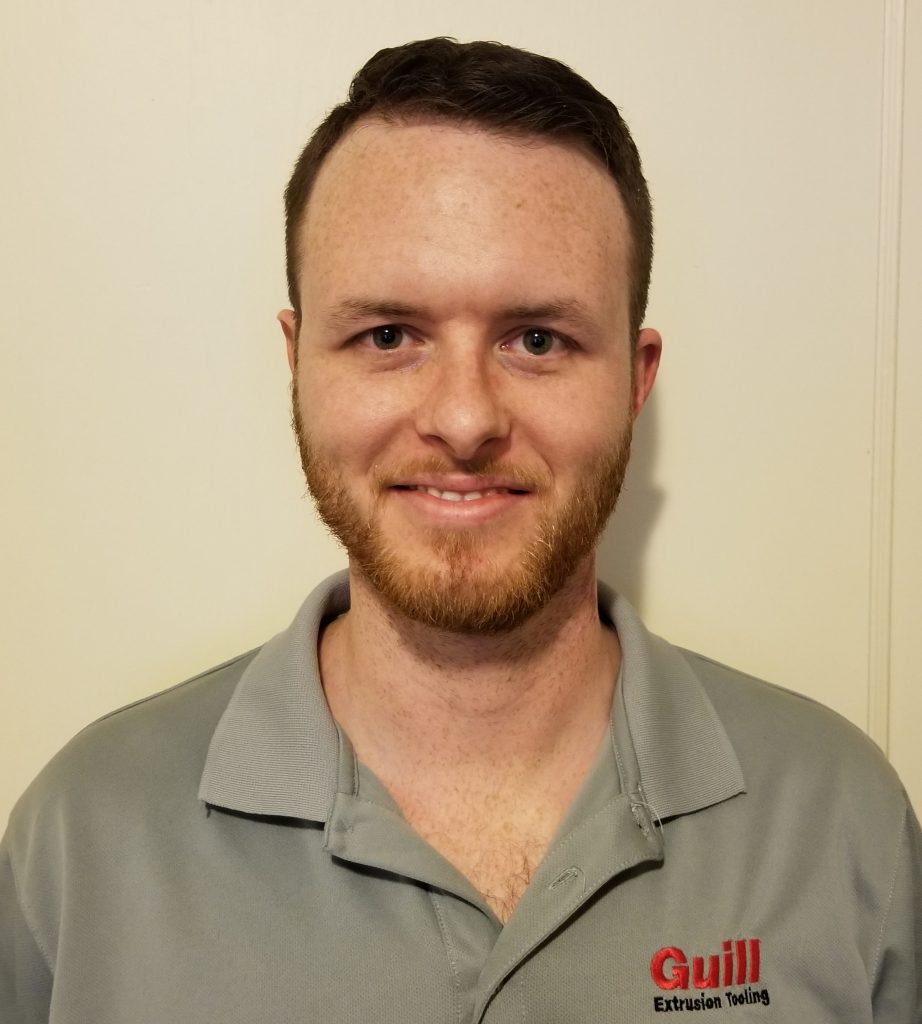Guill Provides Helpful Terms for Extrusion
Guill’s Chief Engineer, Denis Finn, provides this helpful glossary of useful terms, used in the extrusion business worldwide. He would appreciate any feedback.
- Extrusion Die assembly- also known as crosshead, inline tubing die, head, die. Connected to extruder by feed pipe/flange. Forms extrudate into desired shape.
- Tooling- comprised of two components—the tip and the die.
- Tip- defines ID of product for a tubing application or locates the substrate in a jacketing application. Tips are also known as pins, mandrels,
- Die- defines OD of product. AKA bushing.
- Land length- straight section at end of the tool set.
- Gum space- distance between end of tip and back of die land.
- Draw down ratio- relationship between ID and OD of tooling vs. the ID and OD of the finished product.
- Linear draw- the ratio of the ID of the die and OD of the product. And the ratio between the OD of the tip vs the ID of the product.
- Area draw- ratio between the cross sectional area of the output of the tooling and the cross sectional area of the finished product.
- Draw balance- ratio of the outer surface of the draw down cone to the inner surface of the draw down cone.
- Concentricity- how well centered the OD of the product is to the ID of the product or the jacketed substrate.
- Ovality- how round the OD your product is
- Dead spot- section of the flow where material is allowed to stagnate. Usually causes burning and degradation issues over time.
- Balanced flow- uniform exit velocity over the cross section of the product. A well balanced flow produces a higher quality product.
- Fish eye, gel, unmelt, comet- common terms for unmelted or non-homogenous melt
- Melt fracture-surface defect in product caused by shear degradation (usually manifests as a grainy/frosted appearance on surface of extruded part.)
- Die drool- particle buildup on outside surface of tooling. Buildup can break off and cause defects on finished product.
- Bulk residence time- amount of time polymer spends in the extrusion die assembly
- Shear- term to describe a force that the melt experiences as it is forced through the extrusion die assembly.
- Viscous dissipation aka shear heat- frictional heat generated as a result of shear.
- Viscosity- resistance to flow
- Cold spot- section of extrusion die assembly that is not adequately heated resulting in imbalanced flow or a thermoplastic freeze off
- Rheology- science of characterizing a fluid’s behavior
- Draw down cone- section of molten polymer as it draws down to its final product dimension.
- Calibrator- device to precisely establish and control the desired product dimensions
- Stripe-feature to identify or establish orientation of finished product.
- Encapsulated- stripe between outside and inside surfaces of product
- Embedded- surface stripe with established depth. Typically a percentage of the wall.
- Surface- stripe only on surface of product.
- Window- strip that goes through wall from OD to ID.
- Surging- inconsistent melt output that results in product dimension variation..
- Coextrusion- any extrusion that uses two or more extruders.
- Wire line/pass line- distance between face of extruder to the center line of the crosshead.
- Direction of travel- a way to establish production line orientation.
- Recommended moisture content- a qualifier of how dry your polymer should be before you process it.
- Substrate- the material that is being coated in a jacketing process. Can be wire, bundle of strands, fibers, etc.
- Jacketing- covering a substrate with melt.
- Multi-lumen- a tube with multiple internal cavities.
- Melt probe- a device to directly measure pressure and/or temperature of the melt.
- Thermocouple- a device to measure temperature of the extrusion die assembly. Typically used to control heater output.
- Heater bands- provide heat to the extrusion die assembly.
- Flow distributor- shapes the melt to achieve balanced flow.
For more information, please contact:
Denis Finn
Guill Tool & Engineering
10 Pike Street
West Warwick, RI 02893
(401) 823-7600
www.guill.com
dfinn@guill.com


